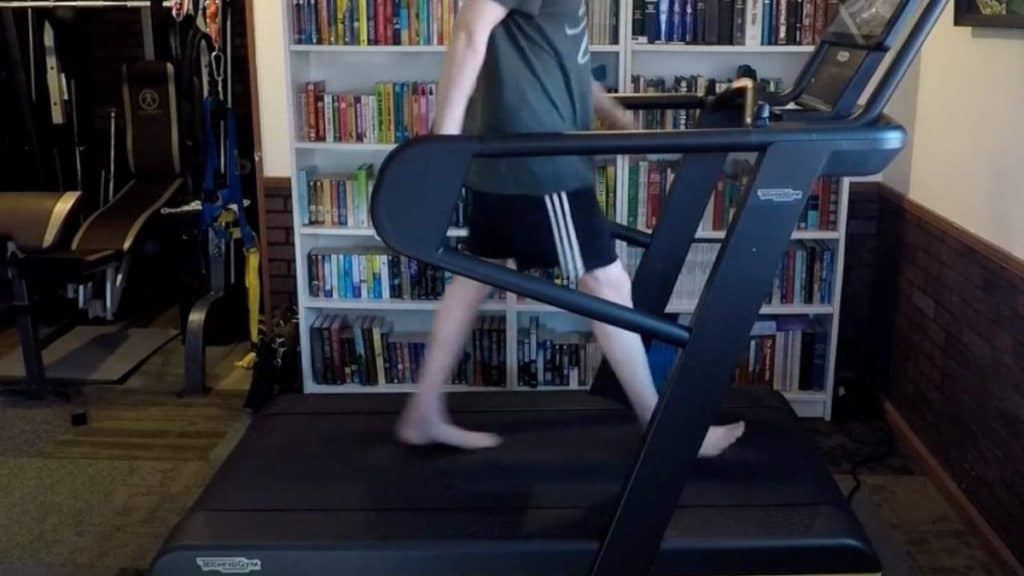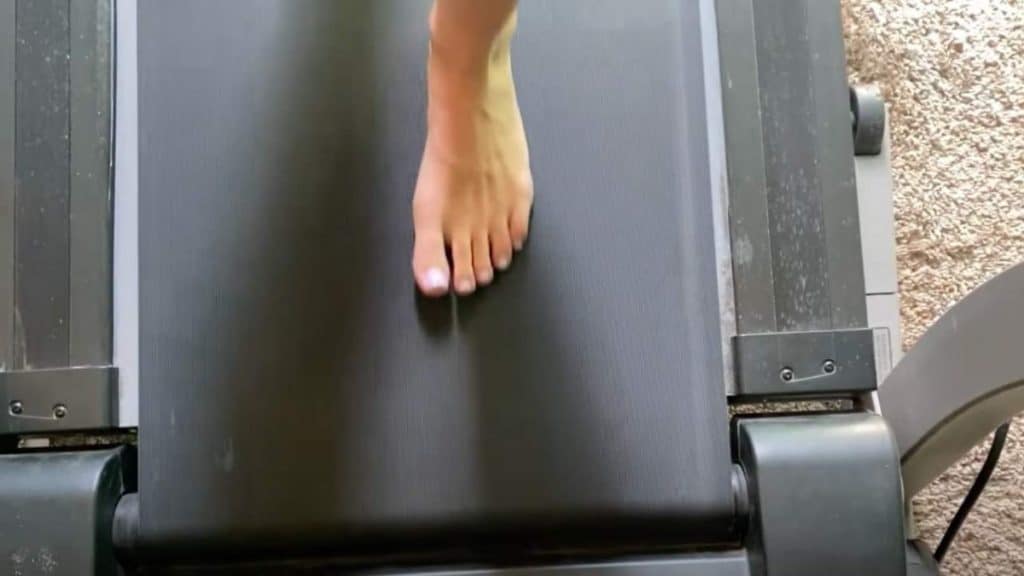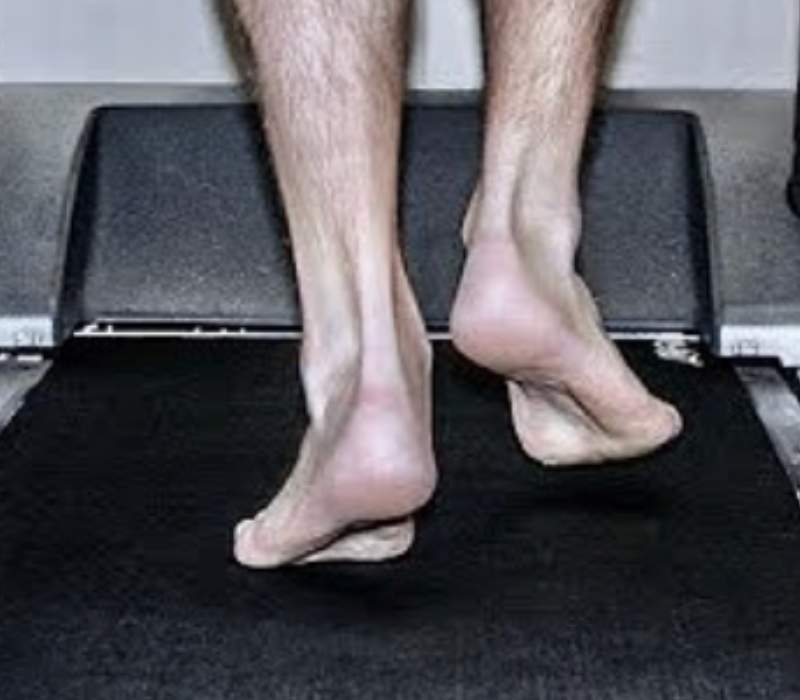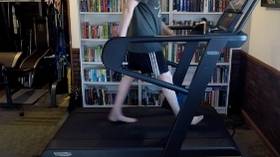
The idea of walking around barefoot might seem a little strange, but it has many benefits. The act of going barefoot is known to have multiple health benefits, from relieving stress and pain in the feet to increasing blood flow throughout the body. Plus, there are environmental reasons for going barefoot as well. For instance, shoes can track harmful chemicals and dirt, polluting your treadmill.
Barefoot walking on a treadmill can be a great way to get some of the benefits of barefoot walking while also getting a workout. There isn’t scientific evidence or studies to support that barefoot walking on a treadmill is dangerous or causes injury, but it can take some time to get used to it.
Ultimately it depends on the person’s individual preference and comfort level. Some people find it perfectly comfortable to walk barefoot on a treadmill, while others find it too slippery or uncomfortable. Ultimately, it is up to the individual to decide whether or not they want to try walking barefoot on a treadmill.
Generally, walking barefoot on a treadmill is not recommended in gyms or fitness centres. It’s not something you see often, and you might get funny looks from gym-goers and staff. Most treadmill manufacturers do not advise using their products without shoes, but this isn’t mandatory.
If you have never walked or run barefoot before, start slowly and gradually increase your speed and distance. Walking or running on a treadmill barefoot can be uncomfortable at first. It is essential to listen to your body and stop if you experience any pain.
Table of Contents
Benefits of Barefoot Walking on a Treadmill

Walking or running on a treadmill can be repetitive and monotonous, which can lead to boredom. This can make it difficult to stay motivated and stick with your workout routine. Mixing up your treadmill routine by walking or running barefoot can help break the monotony and make your workouts more interesting.
Furthermore, some people don’t want to wear shoes and want to get the perfect foot positioning and increase bones strength from barefoot walking or running on a treadmill. Additionally, others may enjoy the feeling of wind on their feet while they are working out.
1. Natural Patterns and Movement
The thickness of a sole, the arch type, and the tread on the bottom of the shoe can all affect your gait. As a result, the wrong shoes can affect your posture and running form. Long periods in shoes that do not adequately support you can lead to injury, muscle tension, or pain.
Walking barefoot can let your feet walk naturally without any patterns created by shoes. This means you can more easily connect with all portions of your foot. That can allow a greater engagement with all of the muscles used to walk and run.
Balancing and strengthening the right muscles while walking and running can improve your posture and give you greater comfort in all of the ways you move your body. Walking or running on a treadmill barefoot can also help you improve your balance and coordination as you have to pay more attention to your footing. This can be beneficial for people who want to improve their sports performance as well as the elderly who want to reduce their risk of falls.
2. Improved Awareness on Foot Positioning
Walking barefoot can give your brain more feedback on what is happening on your feet. It can give you a better sense of proprioception. Proprioception is your body’s ability to sense your body parts’ movement, action, and location.
As more of your foot connects with the ground while you walk, you will become more aware of every muscle that works in your foot to help you move. That increased awareness can help you notice if your gait changes, if muscles are underworking or overworking, or if something is uncomfortable.
3. Increased Strength of Feet and Leg Muscles
Regularly training barefoot will increase the strength of your leg muscles and feet. By connecting with your foot and feeling the muscles you are using, you can more efficiently and effectively use all of your leg muscles.
As your leg muscles get stronger, they will tone more. You will also be able to support your torso more. Better torso support from your legs can take pressure off of your lower back. Additionally, stronger leg muscles can help reduce the risk of injury to your knees and hips.
Your feet also get stronger when you walk on a treadmill barefoot. Your feet’ muscles, tendons, and ligaments have to work harder when there is no support or to cushion from shoes. If you want to advance to walking barefoot outside, the treadmill is a great place to start as it is a controlled environment.
4. Boosted Flexibility in the Feet and Ankles
While walking barefoot, you can rotate your foot more ways than you can with shoes on. This means your foot can become rigid if you are always wearing shoes. Training barefoot can increase the flexibility of your foot, which can give you a greater sense of ease in your movement.
Our natural foot position is to have our toes spread out. However, shoes often restrict that movement and our toes can become clawed. This can lead to bunions or hammertoes over time. Walking barefoot on a treadmill can help maintain the flexibility of your foot and reduce the risk of these problems developing.

Disadvantages of Walking on a Treadmill Barefoot
1. Increased Heat on The Belt
Blend drive treadmills aren’t ideal for barefoot walking because the material used to make the treadmill’s belt is designed for shoes. This material can be abrasive to your feet. As you walk or run without shoes, the friction between your feet and the belt can create heat. That heat increases your chances of blisters.
The belt of the treadmill also heats up as you walk or run, which can create another heat risk, potentially causing blisters. Be mindful of the temperature of your belt to keep your feet safe and protected, and don’t sprint for long periods as the belt can get hot. But if you are walking or running at a moderate pace, the risk for blisters is low.
2. The Belt Can Be Slippy
Walking barefoot on a treadmill can make you more likely to slip and fall. The belt of a treadmill moves, which already can create small slipping hazards. However, with the bottom of your shoes connecting, you can gain some grip. Without shoes, you lose that grip, but you would need to sweat a lot for the treadmill belt to become highly slippy.
3. Extra Pressure on the Balls of Your Feet
Walking or running barefoot makes you strike with the balls of your feet first and not the mid or heel. This is the perfect foot position for walking and running, but the balls of your feet have many bones and joints, which puts extra pressure on your toes as the belt moves. The moving belt requires you to push off with the front of your feet more than you may while walking on stable ground.
Walking on a treadmill barefoot is slightly safer than running, as the belt moves slower. This can protect you from injuries due to the extra pressure on your toes pushing off the belt. Furthermore, a slatted floor treadmill is far better for barefoot walking or running than a belt drive treadmill.
How To Walk Barefooted on a Treadmill
If you want to achieve all of the benefits of walking and running barefoot, you will want to make sure you are training properly. Start slowly by adding walking barefoot into your routine. If you always walk and run in shoes, you do not want to put too much pressure on your feet by running too much.
Your feet will need to adjust to using more muscles, and your body may need to adjust to the new gait. Be mindful of the areas you are training. As your feet gain strength and flexibility, it may be best to start by walking around your house barefoot. This will help you avoid splinters. Next, you can move to grassy areas or areas with gentle sand that will not be abrasive to your feet.
Incorporate balance-training exercises to help your feet and legs develop the strength and flexibility to maximize your barefoot training. As you get a better sense of balance, you can more efficiently train barefoot. To begin, walk 3 times a week barefooted for 30 minutes. This will allow you to get used to the new sensation of walking barefoot and help your feet gain strength.
After a week or two, increase the time to 45-60 minutes. You can also add in some barefoot running if you would like, but make sure to start slowly. If you are new to barefoot running, start by walking fast for 30 seconds and then slow for a minute. As your feet get stronger, you can increase running time.
Can You Walk on a Treadmill with Socks?
Generally, you should avoid walking on a treadmill with only socks on. The texture of the sock could create a greater chance of slipping and falling off of your treadmill, which could cause injury. However, if your socks have a good amount of grip underneath, you can walk on the treadmill in socks.
Socks can also add heat and friction to your foot, increasing your risk of getting painful blisters while walking on your treadmill. If you find that your feet are slipping while walking in socks, you can try wearing a pair of thicker socks or mittens over your socks. This will help add more grip to your sock to avoid slips and falls.
The biggest risk of walking in socks is that the socks fall off or become loose and you trip on them. Similarly, the belt could drag your socks underneath, which could cause serious injury. Therefore, I would personally avoid walking or running on a treadmill in socks.

Zero Drop Shoes For Treadmill Walking
If you want to experience barefoot walking on a treadmill without increasing your risk of blisters and slipping, you can explore the use of zero drop shoes and see how they work for you. These shoes have minimal cushioning that will affect your foot, so they are designed to mimic barefoot training. However, they still do offer grip and protection from the friction of a treadmill to help you avoid slipping or developing blisters.
Zero drop shoes are a type of minimalist shoe that has no heel-to-toe drop. This means that the height of the heel is the same as the height of the toe, which is different from traditional shoes where the heel is higher than the toe. The concept behind zero drop shoes is that they allow your foot to strike the ground more naturally, which is how our feet are designed to strike the ground when we walk or run.
There are many different types and brands of zero drop shoes on the market, so it is important to find a pair that fits your foot properly and provides the level of support and cushioning you need. You may also want to consider the type of treadmill you are using before investing in a pair of zero drop shoes. If you are using a newer model that has a softer surface, you may not need as much cushioning in your shoes. However, if you are using an older model with a harder surface, you may want to look for a shoe with more cushioning to protect your feet.
Other Helpful Articles You Might Enjoy
- Can You Run On A Walking Treadmill or Walking Pad?
- Walking On a Treadmill: How Much Weight Can You Expect To Lose?
- 45 Minutes of Walking: Enough to Lose Weight & Gain Fitness?
- How Long Should I Walk on the Treadmill to Lose Weight?
- Burn 300 Calories Walking: How Long Does It Take?
- Is Incline Treadmill Better For Weight Loss? (Walking & Running Explained)
- Treadmill Calorie Counters: How Accurate Are They?



